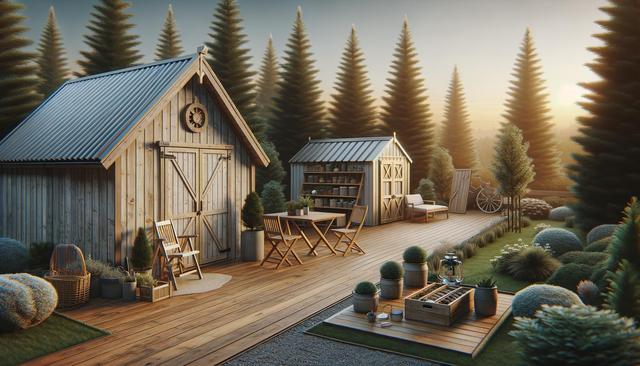Understanding Your Storage Needs
Before diving into the world of sheds and storage solutions, it’s important to assess your specific needs. Whether you’re storing gardening tools, seasonal decorations, or outdoor furniture, knowing what you need to store helps determine the type and size of shed that will work best. Start by making an inventory list of the items you plan to store. This will give you a better idea of the space required and any special considerations such as shelving, hooks, or ventilation.
Consider how frequently you’ll access the shed and what kind of weather protection is necessary. If you live in an area with heavy rain or snow, waterproofing and insulation might be must-haves. Some key aspects to evaluate include:
- Item size and quantity
- Required accessibility
- Climate and weather conditions
- Security concerns
Understanding these factors will help you narrow down your options and avoid over- or under-investing in a storage solution that doesn’t meet your needs.
Exploring Material Options
Storage sheds come in a variety of materials, each with its own set of advantages. Wood sheds are often appreciated for their aesthetic appeal and customizability. However, they require more maintenance to prevent rot or insect damage. Metal sheds, on the other hand, are known for their durability and resistance to pests, but they might be prone to rust if not properly coated. Finally, resin or plastic sheds are lightweight, low-maintenance, and surprisingly strong, making them a practical choice for many homeowners.
To help you decide, here’s a quick comparison:
- Wood: Traditional look, customizable, but requires upkeep
- Metal: Durable, fire-resistant, can rust over time
- Plastic/Resin: Weather-resistant, low maintenance, limited in customization
Evaluating the pros and cons of each material will help you make a well-informed decision that balances long-term value with initial investment.
Choosing the Right Size and Layout
Size and layout are integral to selecting the right storage shed. Too small, and you’ll quickly outgrow your storage space; too large, and it may dominate your yard unnecessarily. Begin by measuring the available space on your property, keeping in mind zoning laws or homeowner association regulations that might affect shed placement or size.
Think about both current and potential future storage needs. For instance, if you plan to acquire more gardening tools or outdoor gear, a slightly larger shed might be a smart investment. Inside the shed, consider adding built-in storage options like:
- Wall-mounted racks for tools
- Freestanding shelving units
- Overhead storage compartments
Planning the interior layout in advance ensures that you can maximize your storage capacity while keeping everything organized and easily accessible.
Location and Installation Considerations
Where you place your shed plays a key role in its effectiveness and longevity. A level surface is essential to avoid structural issues over time. Additionally, placing the shed on a raised foundation, such as concrete blocks or a gravel base, can prevent water damage and improve airflow.
It’s also important to consider proximity to your house or garden. A well-placed shed should be easily accessible but not obstructive. Some things to keep in mind include:
- Sun and shade exposure
- Drainage and water runoff
- Distance from utilities or fences
Installation methods vary depending on the shed type. Some sheds come in pre-fabricated kits that are relatively easy to assemble, while others may require professional installation. Always check local building codes and permit requirements before beginning installation.
Security and Maintenance Tips
Once your shed is installed, maintaining it properly ensures it remains a functional and secure part of your property. Security should be a top priority, especially if you’re storing valuable items like power tools or outdoor equipment. Consider adding a lockable door, motion-sensor lighting, and even a simple alarm system.
Routine maintenance also extends your shed’s lifespan. Depending on the material, this could involve:
- Inspecting for leaks or cracks
- Cleaning gutters and removing debris
- Repainting or sealing wood surfaces
- Checking for rust or mold
Establishing a seasonal maintenance routine ensures your shed remains in top condition and continues to meet your storage needs effectively over time.
Conclusion: Making an Informed Decision
Choosing the right shed and storage solution requires careful research and planning. By understanding your storage requirements, evaluating materials, determining size and layout, considering installation logistics, and planning for long-term security and upkeep, you’ll be well-equipped to make a choice that fits your property and lifestyle. Whether you’re organizing garden tools or creating a backyard workspace, a thoughtfully selected storage shed can provide lasting convenience and functionality.


